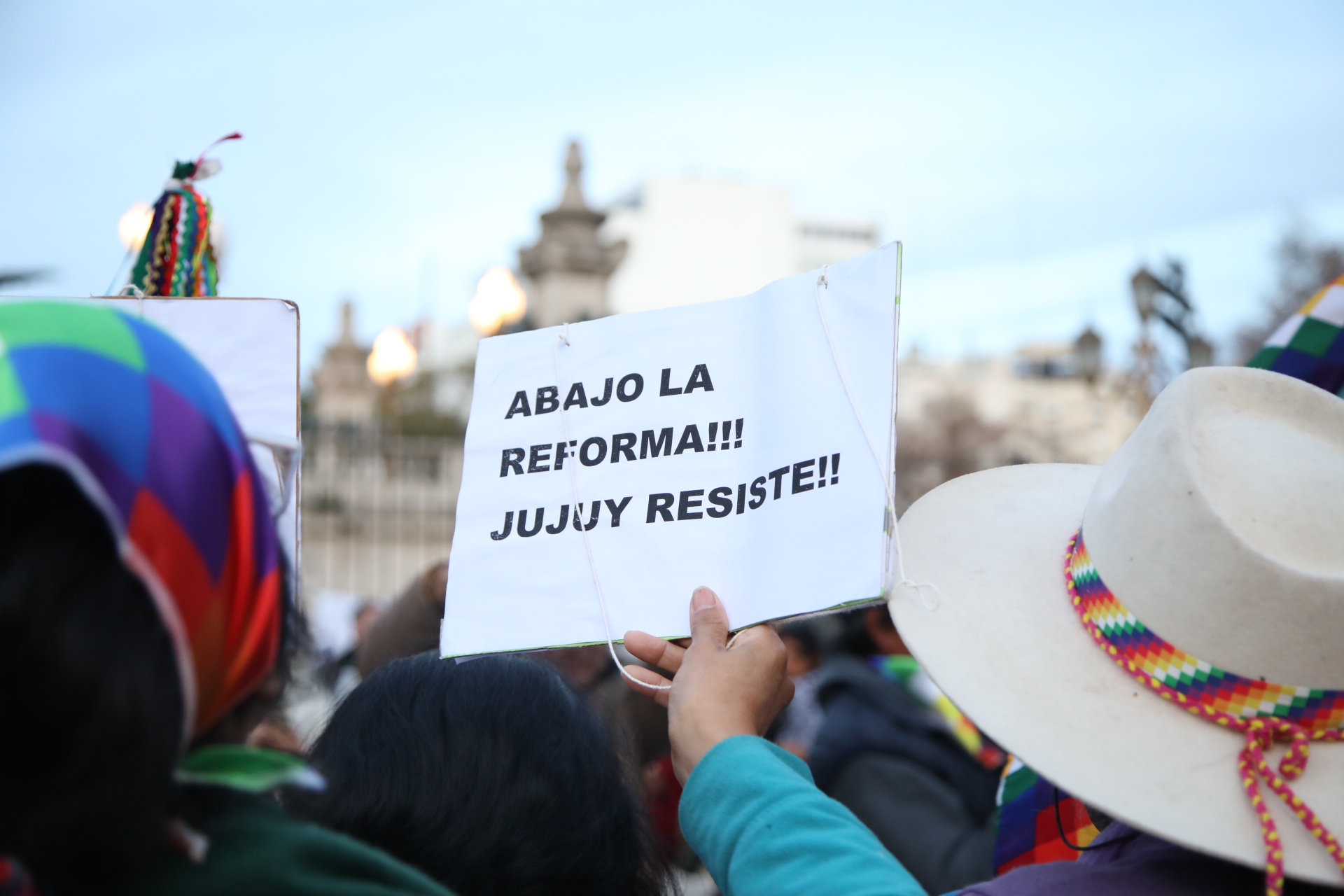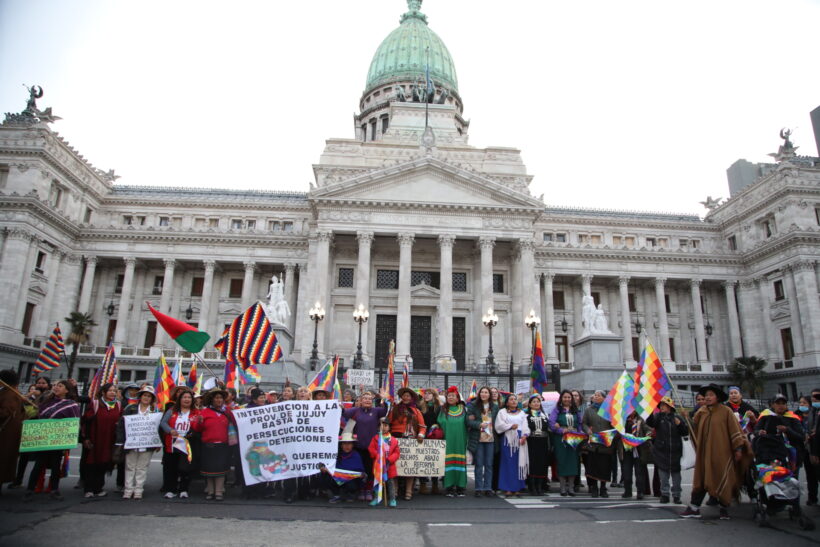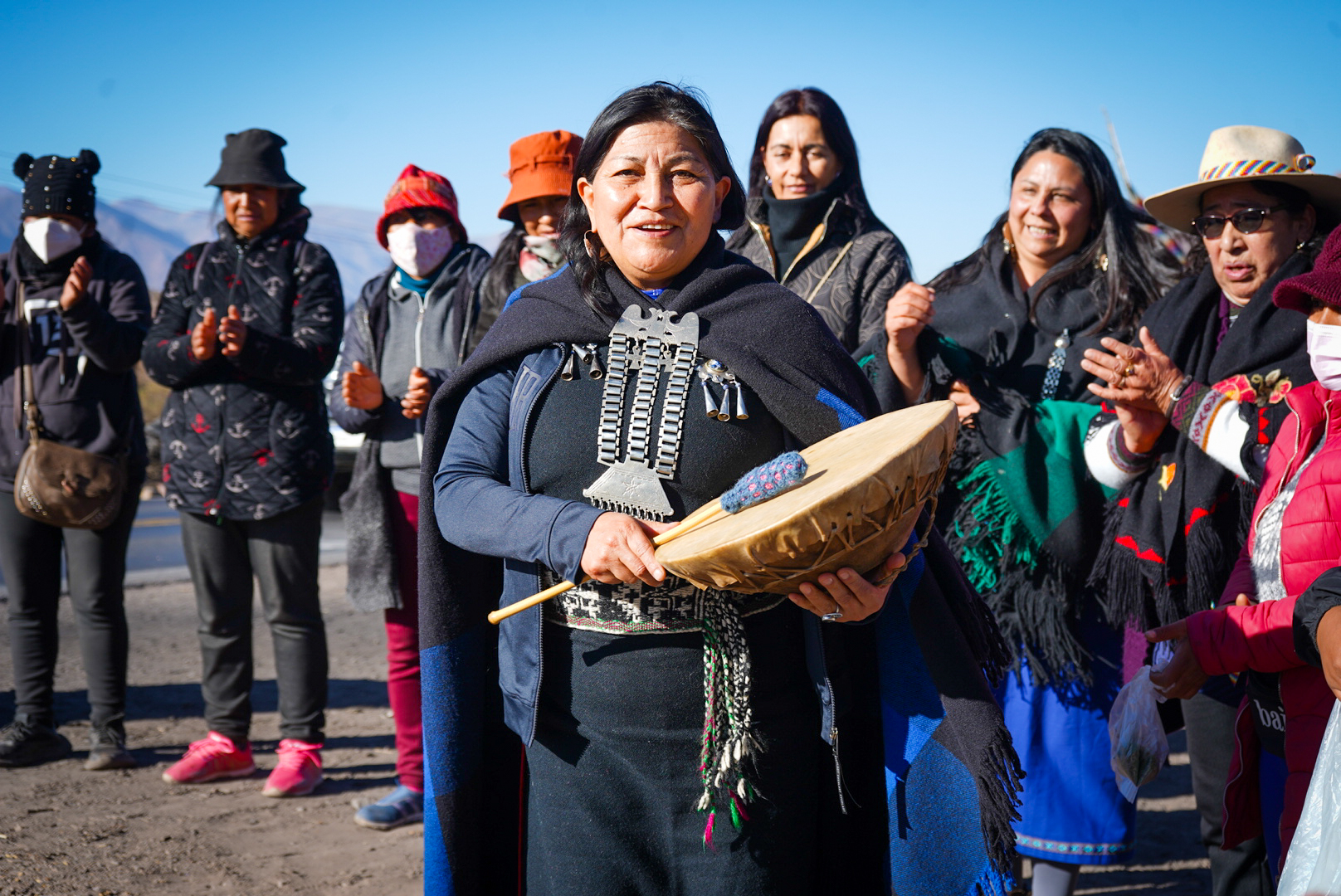September 5th is International Indigenous Women’s Day, established in 1983, during the II Meeting of Organisations and Movements of America in Tiahuanacu, vindicating in the figure of Bartolina Sisa the struggle of indigenous women against all types of oppression. Bartolina was the Aymara woman who accompanied Tupac Katari in organising her people to fight against the Spanish in 1781. On 5 September 1782 she was brutally executed by the conquistadors.
Although in these more than 500 years they have tried to silence and hide the different struggles that vindicate the ancestral cultures that inhabited this continent before the arrival of the Europeans, names such as Bartolina, Micaela Bastidas, Juana Azurduy have remained in history as women who fought with strength.
Today, the struggle of the people continues unabated in this continent, where in the last decades monoculture and extractivism want to wipe out the lands that are still in the hands of peasant or indigenous communities.
During the first days of August, Elisa Loncón, a Mapuche woman and former president of the Chilean Constituent Assembly, and Zenaida Yasacama, the first woman vice-president of the Confederation of Indigenous Nationalities of Ecuador (CONAIE) met in Buenos Aires to give their support within the brotherhood of the peoples of Abya Yala to the communities of Jujuy that make up the Third Malón of La Paz.
 Photo Carolina Avila
Photo Carolina Avila
This gesture of accompaniment began on 8 August in Humahuaca, where a ceremony of the Seed was held, then they moved to the Purmamarca court in the framework of a Minga de la Palabra, to carry out an International and Plurinational Audience for Water and Indigenous territories. There, Elisa Loncón was able to hear the testimony of women from different communities about the violation of their rights and the violation of their territories that they have been suffering from the government of Gerardo Morales, Governor of the province of Jujuy.
In the Runasimi language of the Quechua people, the concept of Minga or Mink’a refers to community work to achieve a common goal, and this work was made possible by the women of the Tejido de Profesionales Indígenas, the feminist organisations Católicas por el Derecho a Decidir and Incidencia Feminista, and also thanks to the support of the National Deputy Mónica Macha, who hosted the event in the National Congress on 9 August to give a voice to women from Jujuy who explained their demands and complaints about the situation they live in this Argentine province.
The voice of the Vice-President of Colombia, Francia Márquez Mina, who could not be present, but who accompanied the activity, was also heard in this space: “It is of utmost importance to promote the preservation and protection of our natural resources with the support and participation of the indigenous communities, whose knowledge is fundamental in the protection of our ecosystems”, were her words in a letter of thanks to the women of the Malón.
After this activity, the women of Jujuy were accompanied by Elisa and Zenaida to the esplanade of the National Congress to carry out, together with feminisms and self-convened citizens, the Wiphalazo in support of the Malón’s demands: nullity of the Unconstitutional Reform, request for the treatment of the Law of communal property of indigenous peoples and intervention of the Province of Jujuy so that the repression, detentions, persecutions and actions of the police forces with tints of state terrorism that have been denounced by human rights organisations since the mobilisation of indigenous people and teachers in the province began, cease.
Verónica Azpiroz Cleñan, Mapuche political scientist and member of the Tejido de Profesionales Indígenas reflected on the event: “I believe that we sowed a seed and managed to give encouragement and newen to the sisters in Jujuy, showing with concrete experiences that indigenous women build power, manage it and project it with our own cultural practices, without imposing agendas, we build and sustain strategic alliances with feminisms and environmental movements because what unites us is respect for life in all its human and natural forms”.
Elisa and Zenaida represent indigenous women who are active political subjects in their countries, when thinking about projects framed within what is called Good Living, where it is evident that the indigenous movement’s commitment is a commitment to life, to the preservation of natural resources so that there is respect and consultation from the state towards indigenous communities when they want to carry out extractive or mining projects or think about public policies that encompass all of society.
 Photo Gabriela Franchini
Photo Gabriela Franchini
“Indigenous women currently have the political capacity to influence the national agenda. We have many resources of both traditional and academic knowledge to argue, to justify, to propose ways of life or political and societal models that are diverse or different from what is proposed by the neo-developmentalist model, which is a model of society in which the self is exacerbated over and above ourselves”, explains Azpiroz Cleñan.
“It is not true that we are poor, they have impoverished us by taking away our territory, they have impoverished us because they have taken away our languages, they have taken away our wisdom, our way of thinking, so the basis of life is our territory, that is why you are here, that is why I am here”, shouted Elisa Loncón in her public lecture on 10 August in front of the Supreme Court of the Nation during her visit to support the permanence of the Third Malón of La Paz.
“It is not true that our cultures are macho, they made us macho because they colonised us, but today that I see so many women and men here I understand that there is indigenous thought in resistance, defending the right to decide, we have to define the future of our peoples, it cannot be that after five centuries they still think that they are going to think and decide for us! We have international legal instruments that all governments know that indigenous peoples are subjects of rights and that is what we are asserting when we are here”, exclaimed Loncón, before the group of men and women from Jujuy who listened to her attentively.
For her part, Zenaida Yasacama, who came from Ecuador to support the demand of the communities of Jujuy, indicated that: “Our struggle is the same as your struggle, this is how we fight, only those of us who are on the streets, hungry, cold, we are not violent, we are not lazy, we fight for dignity, for peace, for a different world, because until today we live with our rights trampled on”.
The indigenous movement in this continent, which has been dressed in white for 500 years, has burst forth with greater force since the beginning of the 1990s. Perhaps in previous decades there were also manifestations of emancipation, as was the case of the claim of the first Malón de La Paz, 77 years ago, when they arrived in Buenos Aires to make a historic demand to the government of Juan Domingo Perón for the return of their lands that had been occupied by former tobacco and sugar estates. In public they were promised the return of their lands, but then the indigenous people were sent by train back to the province without any resolution of their request.
Also, in Bolivia in 1989, the Tupak Katari Guerrilla Army (EGTK) was born and its creator was Felipe Quispe Huanca, an Aymara who knew how to expose the prevailing racism in society: “Why do we always have to be the sweeper, because we always have to be looking out for the oppressor (…) I don’t want my daughter to be your employee”, were the epic responses Quispe gave to a journalist when he was imprisoned on charges of armed uprising. At the same time, in 1990 in Ecuador, a group of 150 people stormed and took over the Church of Santo Domingo in Quito, demanding the resolution of land conflicts. They were members of the Coordinating Committee for Agrarian Conflicts, and after that CONAIE showed the power of the indigenous people claiming their political rights in the streets of an Ecuador that did not know them.
 Photo Gabriela Franchini
Photo Gabriela Franchini
From the hegemonic discourse, amplified by the corporate media, the story is constructed that “we indigenous people are a minority, but at this time it is time to look in the mirror and realise that we are the majority in the countries of our America”, says Bernarda, who recognises herself as Guaraní, although she was born in Buenos Aires.
Back in 1992, the Committee for Peasant Development (CODECA) was created in Guatemala, an indigenous peasant movement that proposes the development of a Plurinational Constituent Assembly in that country. In Mexico, the Ejercito Zapatista de Liberación Nacional (Zapatista Army of National Liberation) was also created in 1994. Almost 30 years later, it is still active and building alliances with the peasant sector in Mexico, despite the continuous attacks they receive from state security forces and organised crime groups.
So, although it may seem new, the organisation and struggle of indigenous peoples for the right to preserve their way of life and their territory is a struggle and an action within the ongoing political scenario in different countries, although in most countries the actors are delegitimised and their influence and rights are not recognised on an equal footing with those of all citizens.
And this resonance of the struggle is found in women who participated in the Minga de la Palabra, as was the case of Eva Marianela Noemí Díaz, who is a woman who is involved in the roadblocks and stays on the roads of Jujuy, is a member of the community of Agua de Castilla, Cochinoca department, is a teacher, a student of the degree in Environmental Management and who participated in the Minga that took place in Purmamarca, she explains that: “The conviction that I currently have is to believe in women as leaders, in the resurgence of women, not only as heads of family, but also women as politicians, it is very difficult to emerge as leaders, given that machismo is not only installed in families, but also in the leadership. From that place, accompanying the process of the communities. Today the discussion of lithium is leading us to have other kinds of discussions, not only within the indigenous territory, but also as an indigenous movement, and also outside, towards society, towards the common people, towards the predominant policies that we currently have”.
“The role of women is important because we organise the food, as well as how to communicate this situation because in Argentina there is a media siege against us, so many of the women who participated had to become tiktokers, go on Facebook, to tell what is happening,” says Natalia Machaca, who is a facilitator on water and land rights.
She, who also participated in the Minga de la Palabra, said that “it was a chance to hear us, to see that we are not alone, that we are being listened to by very important ears and that strengthens us, we women are the glue that makes the struggle work and does not allow ourselves to be stigmatised”.



 Photo Gabriela Franchini
Photo Gabriela Franchini






